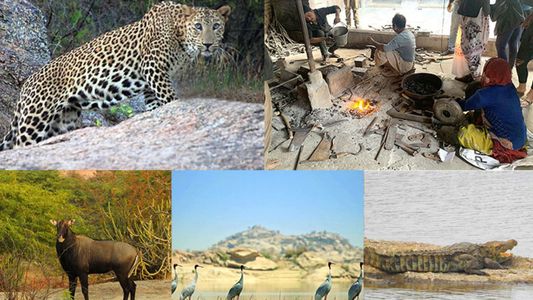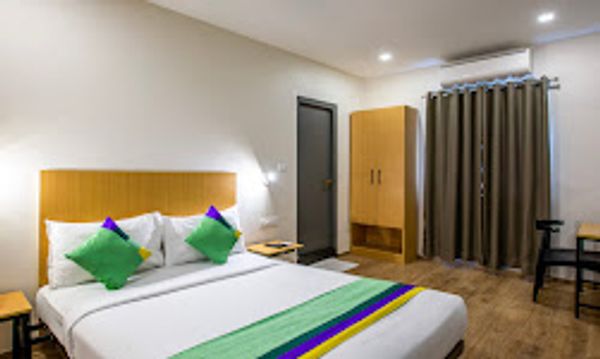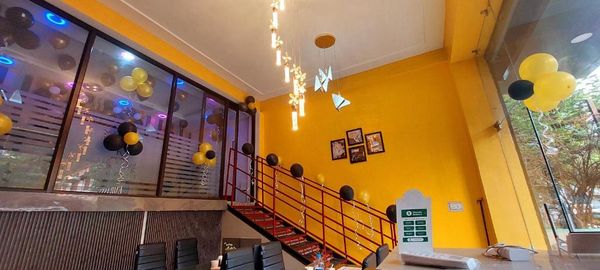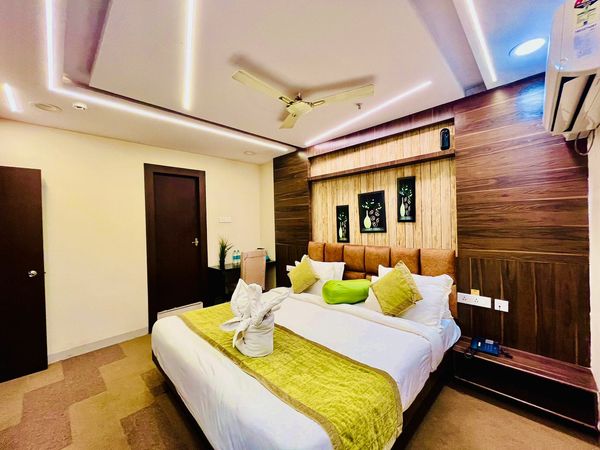Discovering Wildlife Wonder: Jawai National Park Safari Guide
 Palakshi Meharwal
05 Apr, 2025
9 mins read
756
Palakshi Meharwal
05 Apr, 2025
9 mins read
756

Nestled in the rugged terrains of Rajasthan, Jawai National Park is an untamed sanctuary where nature’s raw beauty blends seamlessly with the majesty of wildlife. Unlike many traditional reserves in India, Jawai offers a unique blend of leopard sightings, tribal heritage, and tranquil landscapes, making it a hidden gem for safari lovers and ecotourists alike. Whether you're a seasoned wildlife photographer or a curious traveler looking for offbeat destinations, this guide unpacks everything you need to know for an unforgettable Jawai safari experience.
Why Jawai Is Unlike Any Other Wildlife Destination
Located in the Pali district of Rajasthan, Jawai Bandh Leopard Conservation Reserve stands out for its unusual ecosystem. Here, leopards dwell not in dense forests but among granite hills and open scrublands. The harmonious coexistence of local Rabari tribes and these elusive predators adds a cultural layer rarely seen elsewhere. There are very few human- wildlife conflicts, a testament to the deep-rooted respect the locals hold for nature.
This sense of balance and mutual respect is part of what makes Jawai truly special.
What Wildlife Can You Expect to See?
Leopards, of course, are the star attraction. But they're far from the only inhabitants. The park is home to an impressive variety of fauna:
- Sloth bears occasionally appear in the deeper regions.
- Hyenas and Indian foxes roam the fringes of the rocky terrain.
- Crocodiles bask along the banks of Jawai Dam, a massive water body that also draws migratory birds.
- Over 100 species of birds, including flamingos, cranes, and bar-headed geese, make it a haven for birdwatchers.
Photographers and naturalists frequently note how the topography – granite hills, caves, and open plains – creates a perfect canvas for wildlife observation.
When Is the Best Time to Visit?
The ideal window for visiting Jawai is between October and March. During these months, temperatures are mild, and wildlife sightings are frequent. Summers can be harsh, with temperatures soaring beyond 40°C, which may limit safari activities.
Morning and evening safaris offer the best chance to spot leopards, as they are most active during these times. Be sure to carry layers, especially for early morning drives, as desert temperatures can be surprisingly chilly.
The Safari Experience: What to Expect
Jawai safaris differ from the more commercial experiences in India’s larger national parks. The tours here are smaller, personalized, and often led by locals with intricate knowledge of the terrain and animal behavior.
Typically, you’ll explore the park in open 4x4 jeeps, equipped with safety gear and accompanied by trained naturalists. Drives last around 2–3 hours, with ample time for tracking animal movements, birdwatching, and photography.
Another highlight is the walking tours offered in certain areas, allowing visitors to explore nearby villages and learn about Rabari culture – a valuable supplement to the wildlife adventure.
Accommodation: From Luxury to Rustic Retreats
Jawai offers a variety of stays to suit every kind of traveler:
- Luxury camps and eco-resorts such as Sujan Jawai Camp offer five-star safari experiences with private decks, gourmet meals, and guided excursions.
- Mid-range lodges provide comfort and authenticity, often run by local families who bring a warm, personal touch.
- Budget homestays in nearby villages cater to backpackers and those seeking cultural immersion.
Booking in advance is strongly recommended, especially during peak wildlife season.
Conservation and Community Engagement
Unlike conventional parks governed strictly by forest departments, Jawai functions with a community-based conservation model. Much of the land is privately owned or communally managed by locals. Tour operators often contribute directly to community welfare, including education and healthcare initiatives.
This unique model has contributed significantly to the stability of the leopard population, without fencing or relocating local inhabitants. Travelers, by choosing responsible operators, play an active role in supporting this delicate balance.
Travel Tips for First-Time Visitors
- Pack binoculars and a zoom lens – sightings can sometimes be at a distance.
- Wear muted clothing to avoid startling wildlife.
- Avoid feeding or provoking animals; maintaining a safe distance ensures your safety and theirs.
- Stay hydrated and carry sun protection, especially during day trips.
Also, consider including a day trip to Kumbhalgarh Fort or Ranakpur Temples, both within driving distance and culturally enriching extensions to your visit.
Getting There
- By Air: The nearest airport is Udaipur, approximately 130 kilometers away.
- By Rail: The Jawai Bandh railway station is connected to major cities like Jodhpur and Ahmedabad.
- By Road: Private taxis or self-drive options from Udaipur or Jodhpur offer a scenic and comfortable journey through Rajasthan’s countryside.
Final Thoughts
Jawai National Park isn’t just about ticking off a leopard sighting—it’s about experiencing the raw, unpolished side of wildlife tourism. It invites visitors to slow down, listen to the sounds of nature, and witness a world where animals and humans live in harmony.
Whether you're drawn by the thrill of spotting big cats or the desire to explore Rajasthan beyond its palaces and deserts, Jawai is a destination worth discovering.
Written By:
Palakshi Meharwal



Hotels at your convenience
Now choose your stay according to your preference. From finding a place for your dream destination or a mere weekend getaway to business accommodations or brief stay, we have got you covered. Explore hotels as per your mood.





